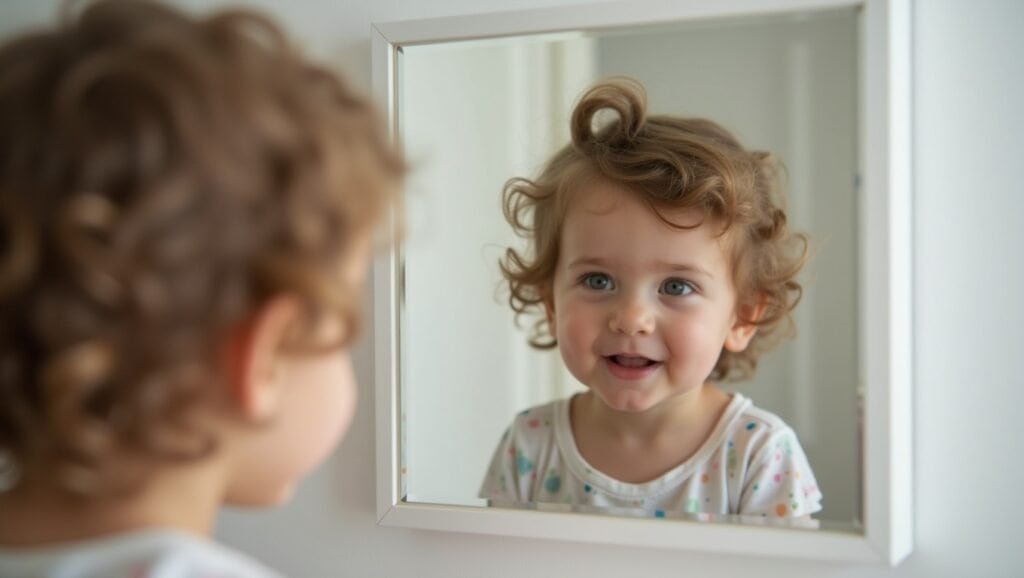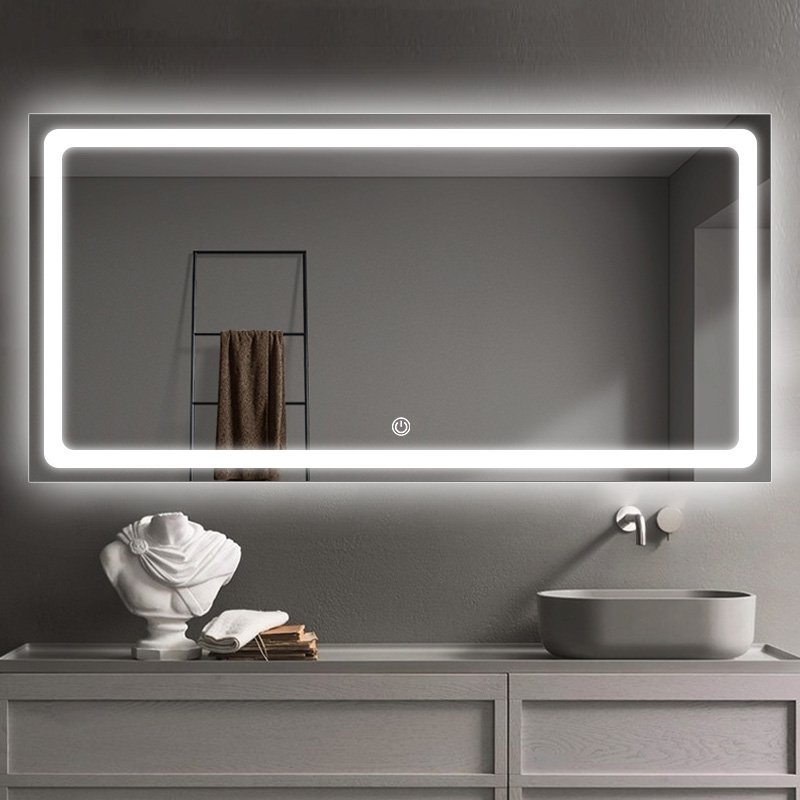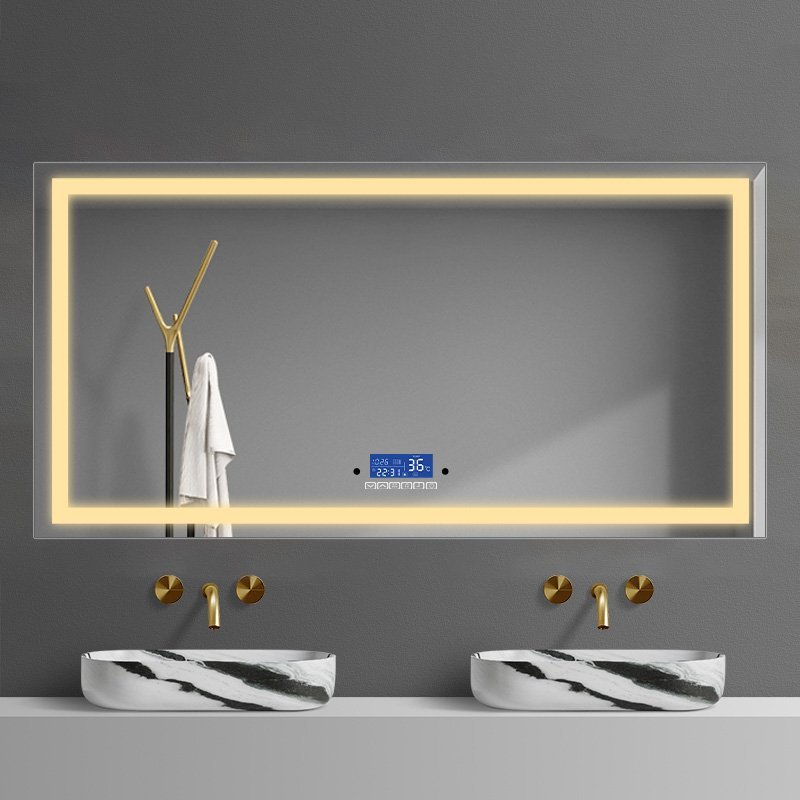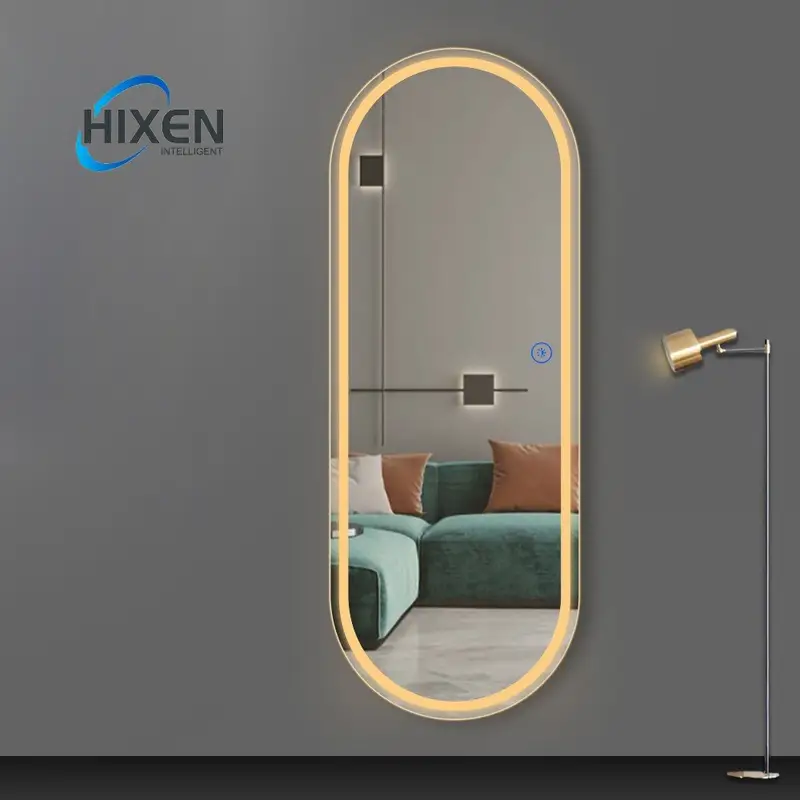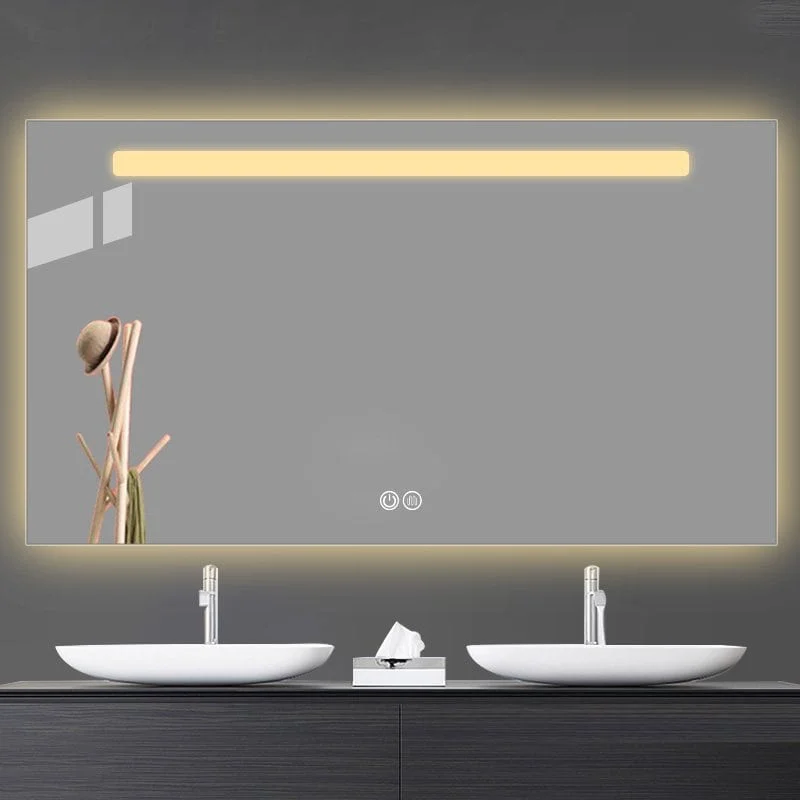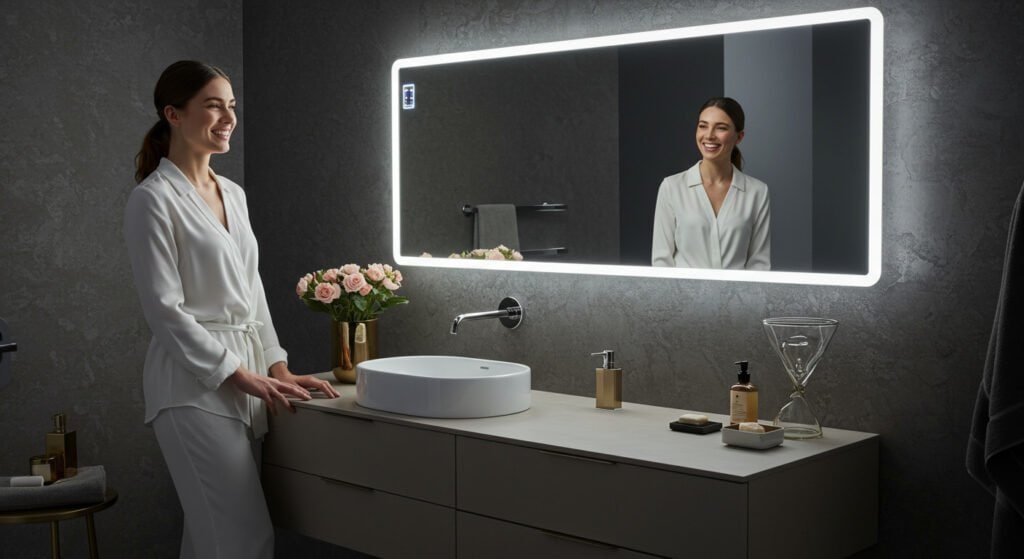|
Getting your Trinity Audio player ready...
|
Peering into a mirror each morning, have you ever wondered about the science behind that perfect reflection? Poor understanding of mirror reflection can lead to choosing inferior products that distort your appearance rather than providing a true mirror reflection of yourself. How does a mirror reflect light?
A mirror reflects light through a process called specular reflection. When light hits a mirror’s smooth, flat surface with a thin layer of reflective material (usually aluminum or silver), it bounces off at the same angle it arrived, creating clear mirror reflection images.
Let’s explore the fascinating science behind mirrors and light and how modern technology has revolutionized this ancient invention.
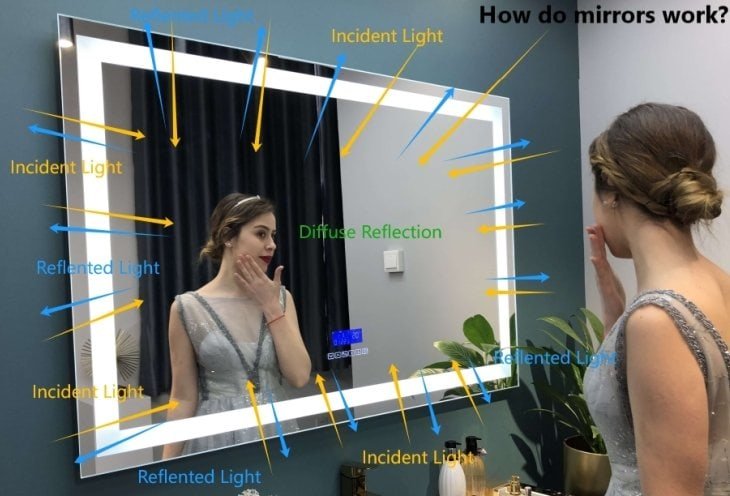
What Makes a Mirror Different from Other Surfaces?
Most everyday objects scatter light in all directions, creating diffused reflection that prevents an image from forming.
Mirrors have an incredibly smooth surface and a reflective backing that keeps the light waves coherent. In other words, over 95% of the light that hits the mirror reflects back at the exact angle it arrived, maintaining the integrity of the original image.
Unlike regular surfaces, high-quality mirrors like those from BFY MIRROR utilize advanced manufacturing techniques to eliminate microscopic imperfections. The glass substrate undergoes multiple polishing stages before applying the reflective coating, typically silver or aluminum.
The molecular structure of the mirror reflector layer is designed so that it absorbs as little as possible and reflects as much as possible. That’s why we get such a crisp, clear reflection. The other thing that quality mirrors have is a protective layer to keep the reflective material from oxidizing. This is how you get a lifetime of mirror reflection.
Why Does a Mirror Reflect Light Well? (Grade 5 Explanation)
Mirrors are special because they have super smooth surfaces that bounce light in a very organized way.
Think of light as tiny bouncing balls – when they hit rough surfaces, they scatter everywhere randomly. But a mirror’s smooth surface makes these light balls bounce back in perfect order.
When explaining how mirrors reflect light to younger students, we can use the analogy of a perfectly flat pond versus a rippled one. When you throw a pebble into a calm pond, the ripples move outward in perfect circles. This represents how light waves behave when hitting a mirror – they remain organized.
On a windy day, the pond’s surface becomes uneven, and any pattern would be disrupted – similar to how light behaves when hitting a textured wall. The mirror’s special coating acts like a light “trampoline” that barely absorbs any energy, allowing almost all light to bounce back. This is why mirrors appear so bright – they’re returning nearly all the light that hits them!
The mirror reflection angle is easy to understand. The angle the light comes in is the angle the light goes out, just like a basketball bouncing off a smooth floor. That’s why mirrors are so cool. They give you a perfect image. Other surfaces scatter light in all directions.
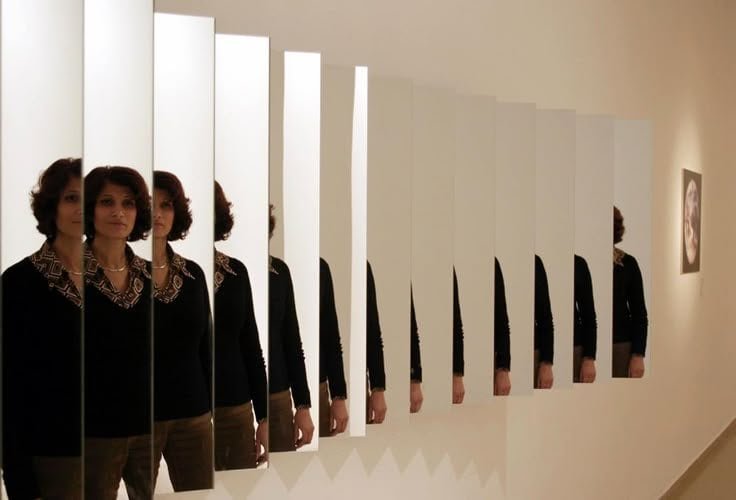
What Does the Mirror Usually Reflect?
Mirrors reflect everything that appears in front of them, whether it’s you or the sun. In the visible spectrum, mirrors reflect light from objects, people, and everything else. A high-quality mirror reflects over 98% of the light that hits it, and it does so without changing the color.
Mirrors do more than just reflect. In a bathroom, our advanced LED mirrors reflect not only your appearance, but they also improve the quality of the light. They provide shadow-free light, which is important for grooming. In architecture, mirrors are used to reflect sunlight into the interior of a house, brightening rooms naturally and reducing energy costs.
Designers use mirrors to make rooms look bigger. They put mirrors in places where they can reflect light and make a room look more open and spacious. In scientific applications, mirrors are used to reflect specific wavelengths of light for research purposes.
The quality of the reflection is critical. A premium mirror with minimal distortion gives you confidence that what you see is accurate, whether you’re looking at yourself or monitoring a space. This idea of a reliable reflection is why mirror reflection quotes often tie into truth and self-awareness. What we see is an accurate representation of reality from our perspective.
Do Mirrors Reflect the Truth?
Do mirrors reflect the truth? Mirrors reflect light accurately, but our interpretation of the reflection is subjective. The mirror shows what light does objectively. Our judgment of that image is subjective.
The reflection of yourself in a mirror gets into deep thoughts about self-perception. Oscar Wilde said in one of the famous mirror reflection quotes, “The true mystery of the world is the visible, not the invisible.” Mirrors show us the visible reality, but our interpretation of that reality is filtered through our own biases.
Physically, mirrors reflect light with remarkable accuracy – the mirror reflection of light follows precise optical principles. However, our brains process this information subjectively. Consider how differently we might perceive ourselves compared to how others see us. Modern LED mirrors with adjustable lighting can actually provide more “truthful” reflections by simulating different lighting environments.
BFY MIRROR’s three-color temperature adjustment allows users to see themselves under various lighting conditions, perhaps offering a more comprehensive “truth” than a single static reflection. Mirrors also flip images horizontally, so the person you see in the mirror is not the person other people see. This difference between the mirror image and the photograph is why some people don’t like pictures of themselves. They’re used to seeing their reversed mirror reflection.
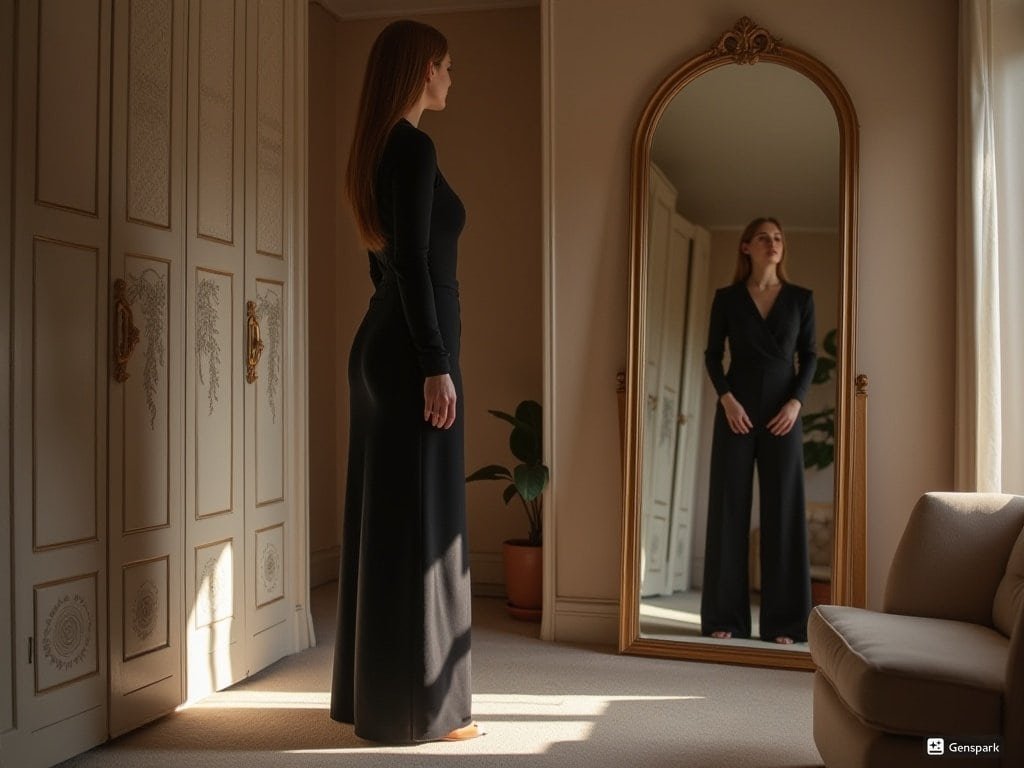
How Do Mirrors Reflect Images?
The creation of images in mirrors follows specific optical principles that determine what we see when we look at our reflection.
When light bounces off an object and hits the mirror, it reflects at the same mirror reflection angle it arrived (angle of incidence equals angle of reflection), keeping the light’s organization.
The mirror reflection of light process creates what looks like an identical world behind the mirror. However, there are some key differences. The mirror doesn’t actually create a duplicate reality. Instead, it creates a laterally inverted image where left becomes right and right becomes left.
This occurs because light rays from different parts of your body travel different distances before hitting the mirror surface. The mirror preserves these distance relationships perfectly while reversing directionality. That’s why text appears backward in mirrors. It’s also why professional photographers and videographers use specialized mirrors to check compositions.
This is also why you need a mirror that’s twice as wide as you are to see your entire reflection. The apparent distance between you and your reflection is equal to twice the actual distance between you and the mirror surface.
Do Mirrors Reflect or Deflect Light?
The difference between reflection and deflection is important for understanding how mirrors work optically. Mirrors reflect light rather than deflect it. Reflection maintains the properties of light while changing its direction according to the law of reflection. Deflection implies changing the direction of light randomly.
When light interacts with a mirror surface, the incident ray, the reflected ray, and the normal to the surface all lie in the same plane. This is the key. It’s what separates reflection from deflection or scattering. The mirror reflect light phenomenon follows the law of reflection exactly, where the angle of incidence equals the angle of reflection.
This predictable behavior allows mirrors to form coherent images. Deflection, by contrast, occurs when light’s path changes without following this orderly relationship – as happens with diffuse surfaces or through refraction in transparent materials. The mirror’s reflective backing (usually aluminum or silver) provides the atomic-level smoothness necessary for true reflection rather than deflection.
This`s why specialized mirror reflectors can be designed for specific purposes – like parabolic mirrors that concentrate reflected light to a focal point, or convex security mirrors that reflect wider angles of view. Understanding this distinction helps explain why a properly installed mirror can effectively reflect sunlight into house interiors for natural lighting enhancement.

How to Write a Secret Message on Mirror?
The “secret” messages on mirrors phenomenon is based on the basic principles of condensation and light reflection.
To write a secret message on a mirror, touch the clean mirror surface with a finger or cotton swab, leaving an invisible oil residue. When the mirror fogs with condensation, the message appears because water condenses differently on the oil-marked areas.
This interesting application demonstrates mirror reflection principles in action. The difference in surface tension between clean glass and oily areas affects the way water condenses, creating a visible difference. The science behind this is called differential condensation – water droplets form differently on surfaces with different levels of hydrophobicity.
For a more dramatic effect, you can use glycerin or diluted dishwashing liquid to create longer-lasting messages that appear whenever the mirror fogs. This is more than a novelty. It shows how even microscopic surface changes can affect how a mirror interacts with moisture and light. Luxury hotel bathrooms sometimes use this idea with decorative patterns that appear only when you take a shower.
The visibility of these messages also relates to the mirror reflection angle – messages are most visible when viewed from angles that optimize contrast between condensation patterns. BFY MIRROR’s anti-fog technology actually prevents this by using special coatings that keep the surface temperature uniform, eliminating condensation altogether – although you could turn off the anti-fog feature temporarily to enjoy this experiment.
Can a Mirror Reflect Everything?
But there are things mirrors can’t reflect. Mirrors don’t reflect all wavelengths of light equally. A regular mirror reflects visible light. You can have a mirror that reflects infrared light. You can have a mirror that reflects ultraviolet light. You can have a mirror that reflects specific wavelengths of light.
The reason mirrors can’t reflect certain things has to do with the material and the physics. A regular glass mirror with an aluminum backing reflects about 88-95% of visible light, but it absorbs a lot of ultraviolet light. A silver-backed mirror reflects better across the visible spectrum, but it’s more expensive.
No mirror can reflect 100% of the light that hits it. Some energy is always absorbed or scattered. However, premium mirrors minimize these losses. Reflecting certain wavelengths, particularly far-infrared and extreme ultraviolet, requires special materials beyond what you’d use to make a regular mirror. Also, the surface quality of the mirror affects how well it reflects. Microscopic imperfections scatter light and reduce reflection efficiency.
This explains why professional-grade mirrors for applications like telescopes and lasers require extraordinarily precise manufacturing. BFY MIRROR addresses these limitations through advanced manufacturing processes that minimize imperfections down to nanometer scales. The mirror’s ability to reflect sunlight effectively depends on both its reflection coefficient and its positioning relative to the light source – a principle utilized in solar energy collection where mirrors concentrate sunlight to generate power.
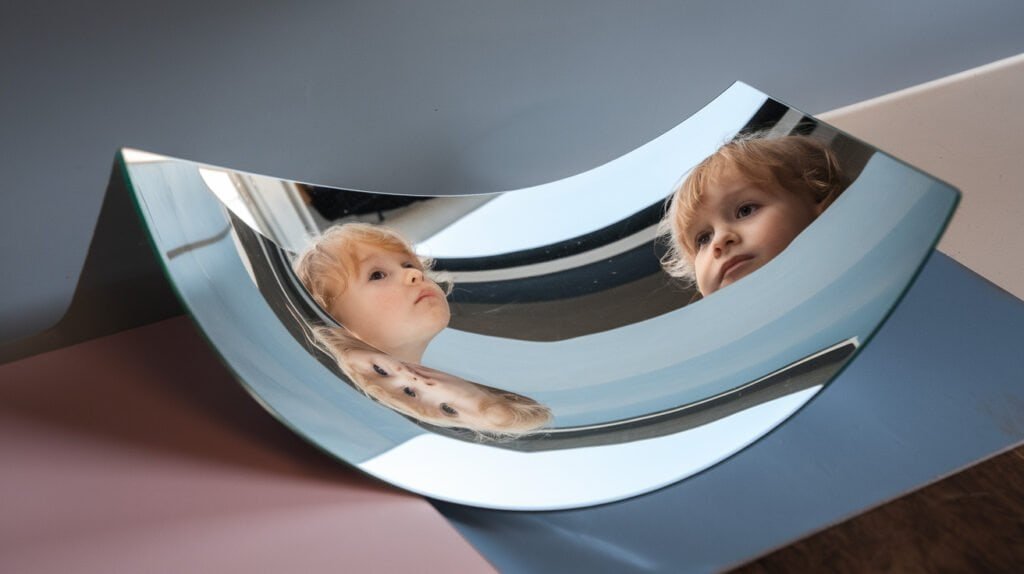
What is the Mirror Reflecting Meaning in Design?
Mirrors also have a lot of symbolic and practical meaning in interior design and architecture. In design, mirrors symbolize expanded space, enhanced light, and self-awareness. They also function to amplify natural light, create visual interest, and alter our perception of space.
The mirror reflection meaning extends beyond the literal to the metaphorical in design philosophy. When architects use mirrors to reflect sunlight into the interior of a house, they’re not just brightening the space. They’re connecting the people who live there with the natural cycles and reducing their need for artificial light. Full-length mirrors in bedrooms serve both a practical purpose and a psychological one. You can see your whole self, and they symbolize wholeness and integrity.
BFY MIRROR’s framed designs often incorporate materials that complement existing interior elements, allowing the mirror to reflect the room’s design language both literally and figuratively. In commercial spaces, mirrors are often placed to reflect movement and activity, creating dynamism and energy. The philosophical concept of mirrors reflecting truth shows up in design through honest material use. High-quality mirror reflectors maintain integrity without distortion.
Modern LED mirror designs with integrated technology represent our contemporary relationship with reflection – enhanced, multifunctional, and adapted to modern needs. This evolution from simple reflective surfaces to interactive elements with lighting, defogging capabilities, and Bluetooth connectivity represents how our relationship with mirrors continues to evolve beyond basic reflection to integrated experience.
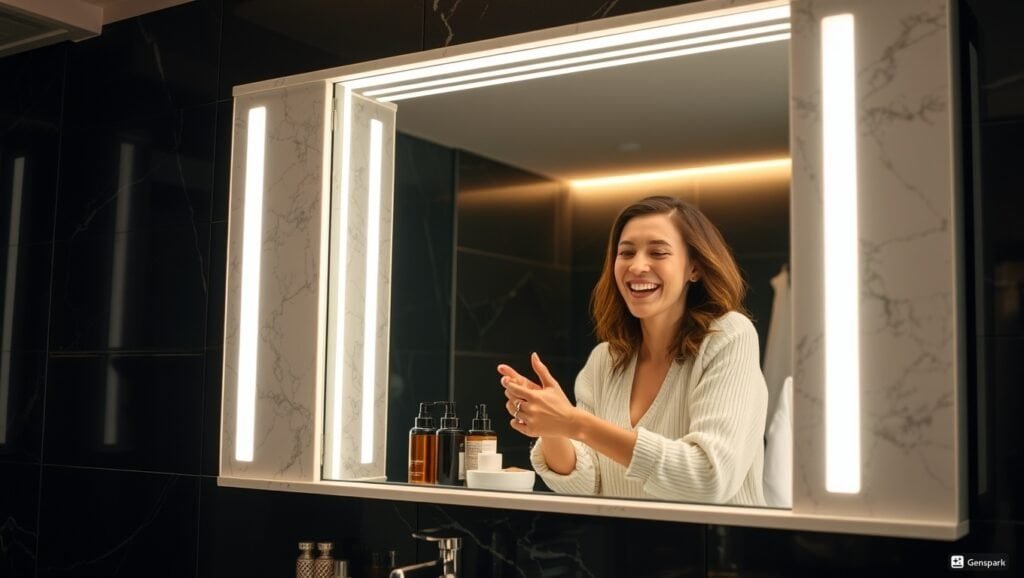
Conclusion
Mirror reflection represents a perfect marriage of physics, materials science, and practical application. From understanding how mirrors reflect light to appreciating their design significance, selecting the right mirror enhances both function and aesthetics.
- What Are the LED Mirror Benefits?
- What Is The Best Light For Vanity Mirror?
- To learn how to pick the right bathroom mirror click here.
- To learn how to install a mirror choose here.
- To learn how to pick the right size mirror click here.
- To learn how mirrors are made click here.
- Click here and you will learn why we look better in mirrors.
- Click here you will learn about the TOP 10 led mirror manufacturers for 2024.

